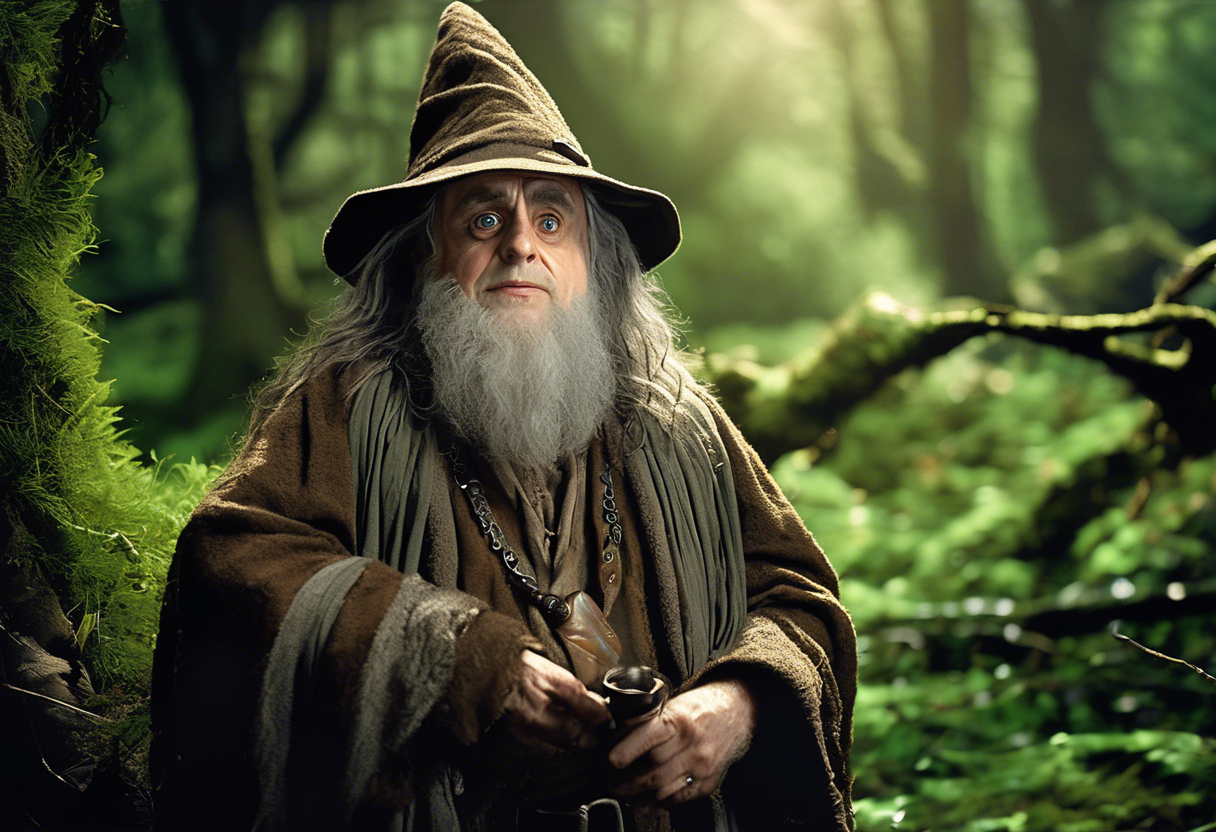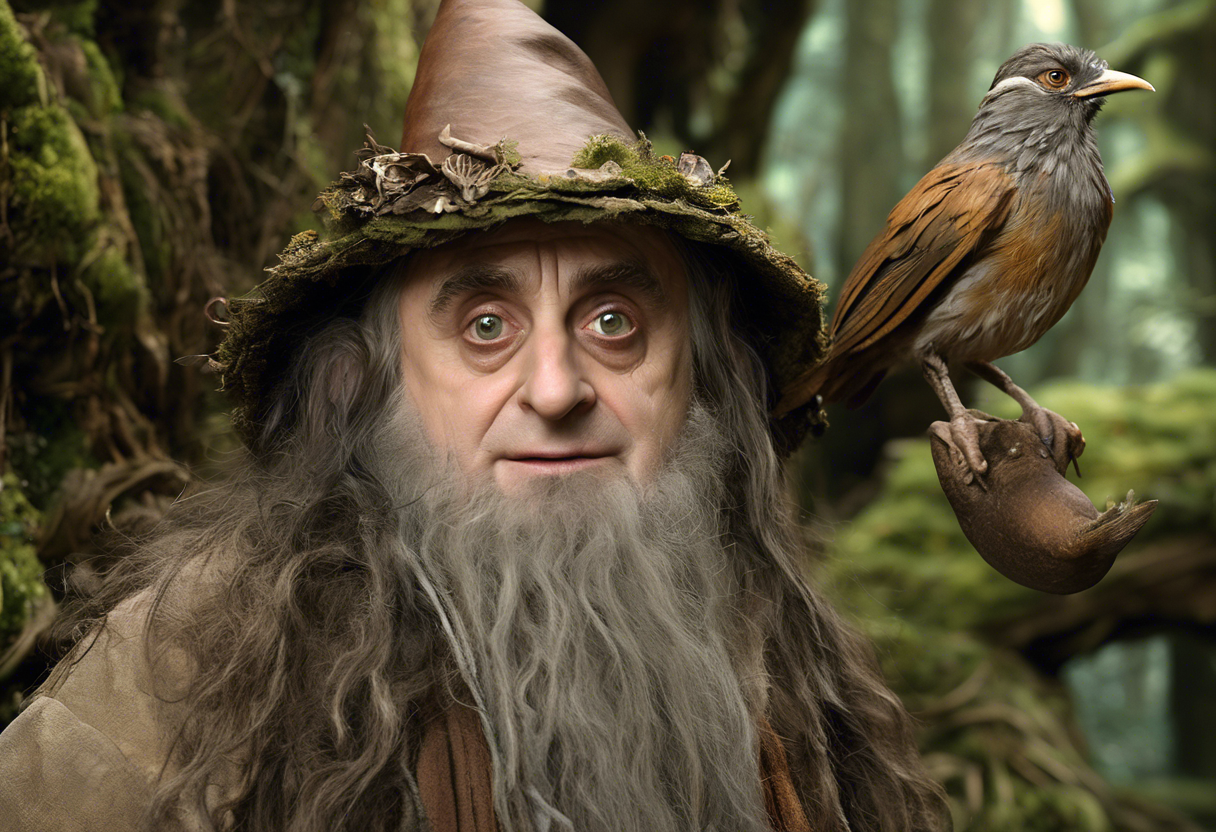Contents
Radagast the Brown: A Comprehensive Analysis
Introduction
Radagast the Brown, also known as Aiwendil, is a pivotal character in J.R.R. Tolkien’s expansive legendarium, including "The Hobbit" and "The Lord of the Rings." Created as one of the five Wizards sent from the Undying Lands to Middle-earth, Radagast plays a significant role in the narrative, particularly through his unique connection with nature and his interactions with other key characters.
Radagast, along with Gandalf and Saruman, was one of the Istari (Wizards) dispatched to Middle-earth around the year 1000 of the Third Age to oppose the rising evil of Sauron [2][4] . His original name, Aiwendil, translates to "bird-friend" in Quenya, reflecting his deep affinity with birds and other creatures of the natural world [2][5].
Living in Rhosgobel, a place known as the "brown village" on the western edges of Mirkwood, Radagast is renowned for his mastery over shapes and changes of hue, as well as his ability to communicate with wild animals [1][2] . This unique set of skills and his dedication to the preservation of nature make him a crucial figure in the fight against darkness.
Role in the Story
Radagast’s storyline is intricately woven into the broader narrative of "The Hobbit" and "The Lord of the Rings." In "The Hobbit," Radagast is introduced through Gandalf’s references, highlighting their close friendship and mutual respect. Gandalf describes Radagast as his "cousin," a term that signifies their close bond rather than a genetic relationship [1][2].
Radagast’s role becomes more pronounced when he warns Gandalf about the return of the Nazgûl, disguised as riders in black, who are seeking information about the Ring and the Shire. He also delivers an invitation from Saruman to Gandalf, unaware of Saruman’s treacherous intentions. This invitation ultimately leads to Gandalf’s capture by Saruman, although Radagast had been instructed to send birds and beasts to aid Saruman, which later proves beneficial in Gandalf’s escape [1][5].
In the context of "The Lord of the Rings," Radagast continues to play a supportive role. Despite not dwelling in Rhosgobel by the time of the War of the Ring, Radagast remains active in the struggle against Sauron. He aids Saruman in gathering information, believing it to be part of the watch against the Enemy, but he is oblivious to Saruman’s true ambitions [3][5].
Radagast’s relationship with Beorn, a Skin-Changer, is also significant. Beorn, who is wary of outsiders, holds Radagast in high regard, which Gandalf leverages to secure Beorn’s assistance for his party of Dwarves and Bilbo Baggins [1][2].
Character Analysis
Radagast’s personality is characterized by his deep love and respect for nature. He is often described as a "worthy Wizard" and "honest" by Gandalf, highlighting his integrity and commitment to his cause [2][5] . Unlike other Wizards, Radagast is not a traveler unless driven by great need, preferring to stay within his domain in Rhosgobel, where he can tend to the animals and plants [2] .
His motivations are rooted in a desire to protect and preserve the natural world. Radagast’s actions are guided by a sense of duty and loyalty to the free peoples of Middle-earth, as well as to his fellow Wizards. His trust in Saruman, despite Saruman’s growing treachery, underscores Radagast’s innocence and good faith [3][5] .
One of Radagast’s greatest strengths is his unique ability to communicate with and control animals. This skill allows him to gather intelligence and provide aid in ways that other characters cannot. However, his isolation and focus on nature can also be seen as a flaw, as it sometimes makes him less aware of the broader political and magical intrigues unfolding around him [1][2] .
Themes and Symbolism
Radagast embodies several key themes in Tolkien’s works. He represents the importance of nature and the interconnectedness of all living beings. His ability to speak with animals and his dedication to preserving the natural world symbolize the harmony that can exist between humans and the environment [1][2] .
Radagast also symbolizes the theme of innocence and trust. His unwavering faith in Saruman, despite the warning signs, highlights the dangers of blind trust and the importance of vigilance in the face of evil. This theme is particularly relevant in the context of the broader narrative, where characters must navigate complex webs of loyalty and deception [3][5] .
Cultural Impact
Radagast has had a significant cultural impact, particularly in the realm of fantasy literature and film. His portrayal in Peter Jackson’s "The Hobbit" trilogy by Sylvester McCoy brought the character to life for a new generation of fans. This adaptation highlighted Radagast’s eccentric yet wise nature, making him a beloved character among audiences [1] .
In popular culture, Radagast’s image as a nature-loving, bird-whispering wizard has influenced various works of art, literature, and even music. His character archetype—the wise, nature-attuned mage—has been echoed in numerous fantasy stories and games.
Critical Reception
Critics and audiences have generally praised Radagast’s character for his unique blend of wisdom, innocence, and connection to nature. In the context of the movies, Sylvester McCoy’s portrayal was well-received for its quirky yet endearing interpretation of the character [1] .
However, some critics have noted that Radagast’s role in the movies, particularly in "The Hobbit" trilogy, feels somewhat peripheral compared to his significance in the books. This has led to discussions about the challenges of adapting complex characters from literature into film, where screen time and narrative focus are limited [4] .
Legacy
Radagast’s enduring appeal lies in his timeless connection to nature and his unwavering commitment to what he believes is right. His character serves as a reminder of the importance of preserving the natural world and the value of trust and loyalty.
In contemporary discussions, Radagast’s themes of environmental stewardship and the interconnectedness of all living beings remain highly relevant. His character has inspired numerous works in fantasy literature and media, cementing his place as one of the most beloved and enduring characters in Tolkien’s legendarium.







